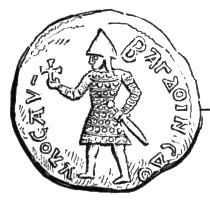|
Vasil Dgha
Vasil Dgha, or Dgha Vasil (''dgha'' meaning "child, boy"), was the Armenian ruler of Raban and Kaisun. He succeeded his adoptive father, Kogh Vasil, in 1112. Baldwin II, Count of Edessa The County of Edessa (Latin: ''Comitatus Edessanus'') was one of the Crusader states in the 12th century. Ferdinandi, Sergio (2017). La Contea Franca di Edessa. Fondazione e Profilo Storico del Primo Principato Crociato nel Levante (1098-115 ..., tortured Vasil to force him to abandon his domains in 1116. Vasil settled in Constantinople. References Sources * * * 12th-century Armenian people 12th-century Byzantine people Byzantine people of Armenian descent {{Turkey-hist-stub ... [...More Info...] [...Related Items...] OR: [Wikipedia] [Google] [Baidu] |
Fortress Of Kaysun
The Fortress of Kaysun ( tr, Keysun Kalesi) is located near the village of Çakırhüyük, which used to be named Keysun, in the Adıyaman Province of rural southeastern Turkey.''Köy Köy Türkiye Yol Atlası'' (Istanbul: Mapmedya, 2006), map 171. The fortress was a stronghold of the crusader County of Edessa. In 1131, the Danishmend Emir Gazi Emir Gazi or known as Emir Melikgazi was the third ruler of Danishmendids and the elder son of Gazi Gümüshtigin. Life After Gazi Gümüshtigin's death, the country was divided into two. Emir Gazi ruled Sivas and surrounding, while his brother S ... besieged the place. Joscelin I, Count of Edessa, hastened to relieve the defenders and died somewhere in the vicinity. References External links About Keysun County of Edessa Crusader castles Buildings and structures in Adıyaman Province 1130s in the Crusader states {{Adıyaman-geo-stub ... [...More Info...] [...Related Items...] OR: [Wikipedia] [Google] [Baidu] |
Kogh Vasil
Kogh Vasil, or Vasil the Robber (; died on 12 October 1112), was the Armenian ruler of Raban and Kaisun at the time of the First Crusade. In the early 12th century, he was the most influential Armenian ruler who adhered to the Armenian Apostolic Church , native_name_lang = hy , icon = Armenian Apostolic Church logo.svg , icon_width = 100px , icon_alt = , image = Էջմիածնի_Մայր_Տաճար.jpg , imagewidth = 250px , a .... He was succeeded by his adopted son, Vasil Dgha. References Sources * * * 11th-century Armenian people 11th-century Byzantine people 1112 deaths Armenian Apostolic Christians {{Turkey-hist-stub ... [...More Info...] [...Related Items...] OR: [Wikipedia] [Google] [Baidu] |
Baldwin II Of Jerusalem
Baldwin II, also known as Baldwin of Bourcq or Bourg (; – 21August 1131), was Count of Edessa from 1100 to 1118, and King of Jerusalem from 1118 until his death. He accompanied his cousins Godfrey of Bouillon and Baldwin of Boulogne to the Holy Land during the First Crusade. He succeeded Baldwin of Boulogne as the second count of Edessa when he left the county for Jerusalem following his brother's death. He was captured at the Battle of Harran in 1104. He was held first by Sökmen of Mardin, then by Jikirmish of Mosul, and finally by Jawali Saqawa. During his captivity, Tancred, the Crusader ruler of the Principality of Antioch, and Tancred's cousin, Richard of Salerno, governed Edessa as Baldwin's regents. Baldwin was ransomed by his cousin, Joscelin of Courtenay, lord of Turbessel, in the summer of 1108. Tancred attempted to retain Edessa, but Bernard of Valence, the Latin patriarch of Antioch, persuaded him to restore the county to Baldwin. Baldwin allied with Jawa ... [...More Info...] [...Related Items...] OR: [Wikipedia] [Google] [Baidu] |
Count Of Edessa
The County of Edessa (Latin: ''Comitatus Edessanus'') was one of the Crusader states in the 12th century. Ferdinandi, Sergio (2017). La Contea Franca di Edessa. Fondazione e Profilo Storico del Primo Principato Crociato nel Levante (1098-1150). Pontificia Università Antonianum - Rome. . Its seat was the city of Edessa (present-day Şanlıurfa, Turkey). In the late Byzantine period, Edessa became the centre of intellectual life within the Syriac Orthodox Church. As such it also became the centre for the translation of Ancient Greek philosophy into Syriac, which provided a stepping stone for the subsequent translations into Arabic. When the Crusades arrived, it was still important enough to tempt a side-expedition after the siege of Antioch. Baldwin of Boulogne, the first Count of Edessa, became King of Jerusalem, and subsequent counts were his cousins. Unlike the other Crusader states, the County was landlocked. It was remote from the other states and was not on particular ... [...More Info...] [...Related Items...] OR: [Wikipedia] [Google] [Baidu] |
12th-century Armenian People
1 (one, unit, unity) is a number representing a single or the only entity. 1 is also a numerical digit and represents a single unit of counting or measurement. For example, a line segment of ''unit length'' is a line segment of length 1. In conventions of sign where zero is considered neither positive nor negative, 1 is the first and smallest positive integer. It is also sometimes considered the first of the infinite sequence of natural numbers, followed by 2, although by other definitions 1 is the second natural number, following 0. The fundamental mathematical property of 1 is to be a multiplicative identity, meaning that any number multiplied by 1 equals the same number. Most if not all properties of 1 can be deduced from this. In advanced mathematics, a multiplicative identity is often denoted 1, even if it is not a number. 1 is by convention not considered a prime number; this was not universally accepted until the mid-20th century. Additionally, 1 is the ... [...More Info...] [...Related Items...] OR: [Wikipedia] [Google] [Baidu] |

.png)
